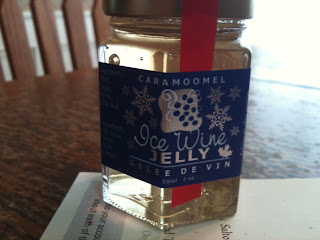This is the technique Marg uses when she makes her fantastical
Summer Tomato Sauce. Enjoy and read the directions through to the end before you even think about starting. Do take great care as boiling water plays a dominant role. Keep all the young ones safely occupied elsewhere.
You’ll need:
pint or quart mason jars with lids (rings and seals—you
can reuse the rings from year to year, but never reuse the seals, buy new ones)
water bath canner
jar lifter, canning funnel, ladle, tongs
a saucepan
old towels
What to do:
Fill the waterbath canner with water and start heating it on
the stovetop as you’re nearing the end of the cooking of your sauce. You will
need the water boiling when you start processing, and it takes a while for all
that water to reach boiling point, so start this early!
You will need to sterilize jars and lid seals to prevent
spoilage. Put the seals in some water in the saucepan and bring the water to a
boil; keep water simmering throughout. Also rest funnel and tongs in the
boiling water to sterilize them until you’re ready to use them.
You can sterilize the jars 2 different ways. You can run
them through the dishwasher just before you’re going to fill them (keep the
door shut when you’re not removing jars), or you can put them in the boiling
water in the waterbath canner and leave them a few minutes. In both cases
remove a jar just before you’re going to fill it.
Place the canning funnel in the sterile jar and ladle in
sauce, leaving 1/2 inch of headspace at the top of the jar. This is important.
Remove funnel, carefully wipe any drips off the rim of the jar with a clean
cloth or paper towel, lift a seal from the saucepan of simmering water with the
tongs, and align this, rubberized ring side down, on top of the jar. Screw a
ring lid over this finger tight only—you don’t need to really tighten the ring.
The screw lid is meant to hold the seal lid in place, nothing more. It’s the
flat seal lid that will be forming the seal.
Place the filled jars in the wire tray that comes with the
waterbath canner (most canners hold 6-7 jars in their wire trays). DO NOT put
the jars in the tray elsewhere and carry it to the canner; rest the tray inside
the canner, keeping it above the water using the handles that are designed to
hook on the edges of the canner. Once it’s filled, carefully lower the tray full
of jars into the boiling water. Be careful of your fingers, this is boiling
water! The tops of the jars should be covered by 1 inch of water. If they’re
not covered by enough water, add more hot water. Also be careful that there
isn’t too much water—keep an eye on the water level in the canner as you lower
in the full tray, and if necessary scoop out some of the water so it doesn’t
overflow. Fold the wire tray handles in just a bit so that the lid will fit on
the canner.
Bring the water back to a boil and, once it’s boiling again,
set your timer. Process pint jars in the boiling water for 35 minutes. Process
quart jars for 45 minutes. Don’t overprocess or you could overcook the
contents; don’t underprocess or you’ll risk unsealed jars and contamination.
Lay an old towel on a nearby counter. This is where you will
be setting the hot jars for cooling after they’ve been processed.
When the jars are done processing, remove the canner lid and
carefully nudge the handles on the wire tray back upright (use a fork or tongs
if they’ve dropped into the water), then lift the tray and hook the handles on
the edges of the canner. Using your jar lifter, grip a jar around its shoulders
just below the lid and lift it out of the canner. Support the bottom with your
other hand (covered by a towel or an oven mitt; towels are better because
things are going to get wet!) while you move the jar to the towel you’ve spread
on the counter. Leave 1-2 inches of space around each upright jar, for air flow
and cooling.
When a jar seals, you will hear a pop. When it is sealed,
the lid will be slightly concave and when you touch it with your fingers, there
will be no give. If a jar is not sealed, the lid will be convex (very slightly
raised) and when you press with your fingers, you will feel some movement. If a
jar doesn’t seal, put it in the fridge when it’s cool and eat it within a week
or so.
Once the jars have sealed and are cool, store them in a cool
place. Canned sauce will keep a year. DO NOT eat contents that smell when you
open the jar, if there is mold, or if there is any suspicion that they may have
spoiled. Throw away spoiled contents. Often, you will have to pry the seal lid
off a sealed jar of sauce with the edge of a spoon. You’ll likely hear another
pop when it comes loose. This means there was a good seal.
You can reuse the jars and ring lids year after year as long
as they’re still in good condition. Always get new lid seals.
This process is
much the same for many different types of fruits and vegetables; only the processing
times will differ. Find the proper processing times and any requirements for
different fruits or veggies (e.g., hot pack or cold pack, altitude) on the
Internet.
For safe canning to prevent botulism, low acid foods need to be processed in a pressure cooker instead of the water bath canner.


























